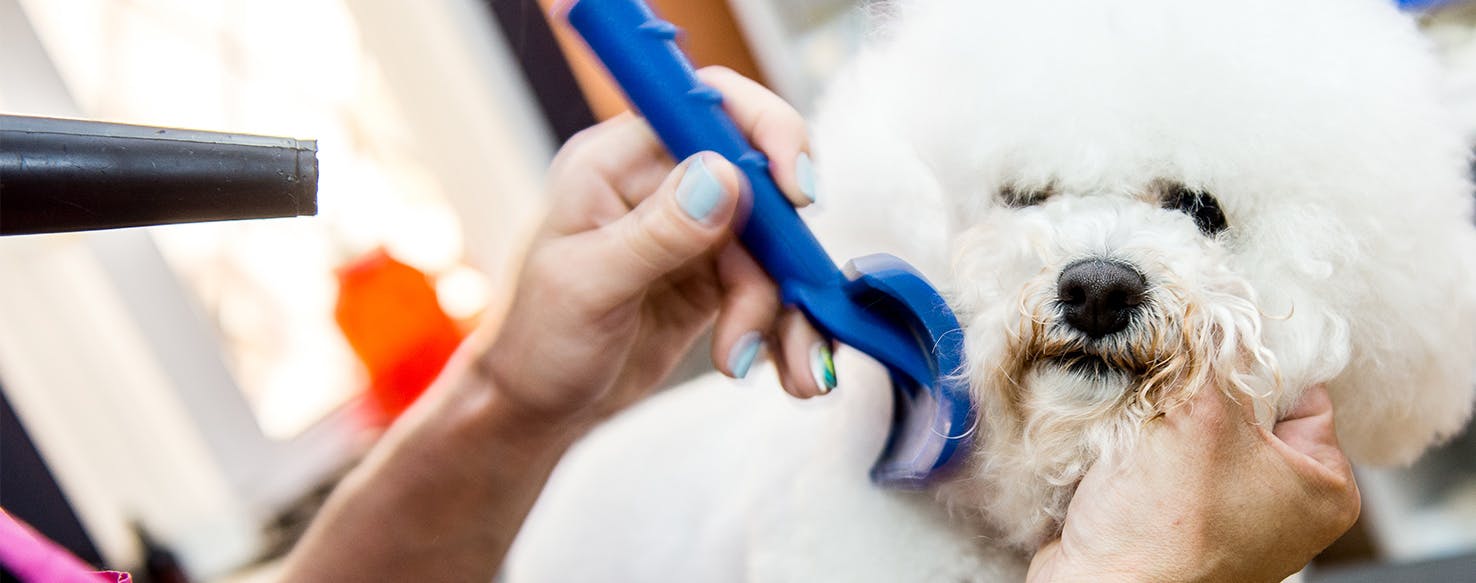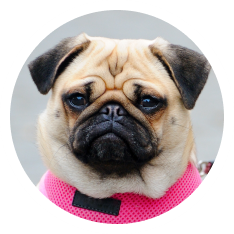All mammals shed, even you, but your dog is covered in hair,
so when they shed, it is pretty noticeable! For pet owners, shedding can result
in constant vacuuming to remove pet hair from furniture and floors, and the use
of a lint roller on clothes every time you venture out in public. While there
is no way to completely stop your dog from shedding, there are ways to reduce
the amount your dog sheds. If you think that your dog is shedding a lot more
than normal, or you just want to reduce the amount of hair in your life, read
on to find out just why your dog sheds.
Causes of Dog Shedding
Shedding is the natural and normal process our bodies use to
get rid of old and damaged hair. And unless your dog is a hairless breed, they
are going to shed. There are many factors that can cause more shedding than
usual, including the weather.
For many dogs, the shedding season happens twice a year, in spring
when the winter coat is shed so that a lighter summer coat can grow in, and then
again in the fall when the lighter coat sheds for the winter coat to come in. Dogs
shedding more in winter isn’t common, but since seasonal shedding is triggered
by the length of the days throughout the year, dogs who are kept mostly indoors
often shed the same year round.
The health of your dog can also affect how much your dog sheds.
Loss of hair can be exacerbated by malnutrition or a lack of a required
nutrient, vitamin or mineral in your dog’s diet. Skin conditions like dry skin,
dandruff and yeast infections can cause damage to the hair follicles resulting
in excessive shedding. Allergies from food, pollen, dust mites or mold can cause
varying amounts of hair loss in dogs, and parasites like worms, fleas or ticks can
cause itching, scratching, and chewing of the hair coat. Pups can also
experience more hair loss as they age.
Genetics dictates that some dogs shed more than others,
which is why you may see your Lab shedding constantly while your Maltese barely
leaves a hair behind. Heavy coated breeds like Labradors and Collies have double
coats to withstand colder temperatures, and will shed quite a bit more than
shorter, single-coated breeds. How long dog shedding lasts does depend on DNA
as well, such as in the case of German Shepherds who will shed year round,
regardless of season. Low-shed and hypoallergenic dogs, like Airedale Terriers,
Maltese and Poodles, shed very little, and are often chosen by owners who have
allergies to dog hair and dander.
So, while all dogs do shed, the amount and when they shed
can vary a lot! If keeping up with the hair is a serious consideration for you,
you can choose a breed that sheds less. Most likely, though, if you are reading
this article, you’ve already got a shedder in your house, so what you need to
know is how to keep a dog from shedding all over everything you own.
How To Prevent A Mess of Dog Hair
While you can’t prevent your dog from shedding, minimizing
the amount your dog sheds can make quite a difference as to how much of a mess
you have in your home and on your clothes. With a few simple strategies, you
can have less fur residing in your life!
Grooming
Regularly grooming your dog is the number one thing you can
do to minimize the mess from your dog’s hair. Grooming includes brushing,
washing and sometimes clipping your dog’s coat, depending on the breed and your
preference.
The best way to deshed a dog depends on the type of coat
they have, as does the kinds of dog shedding products you’ll need. Short haired
dogs generally can do fine with a once a week brushing. For smooth coated pups,
like Basset Hounds and Chihuahuas, use a rubber brush to loosen the hair, followed
by a bristle brush to remove it. Shedding solutions for Labradors, or other
short and dense coated breeds, generally use a slicker brush or a metal comb to
detangle and loosen, followed by a bristle brush.
For the long-haired pups, setting aside a few minutes a day
to work on the coat will be the best way to minimize these long locks from
getting all over your house. The silky coated dogs like Yorkies or Afghan
Hounds do best with a slicker brush or pin brush first, then the bristle brush.
Clipping around the feet is a good idea too! Those long-haired dogs whose coats
always mat need some time to get all those tangles out daily with a slicker or
pin brush, and then of course, a bristle brush to catch the hair. These last
pups also do best when clipped regularly to prevent the mats from happening.
Brushing distributes body oils, which helps keep your dog's
skin moisturized, and can reduce the amount of hair your dog loses. Moisturizing
your dog's skin and hair can also be done through the occasional bath using moisturizing
shampoos that are available commercially, or oatmeal shampoos that improve the hair
coat and reduce itchy skin.
Diet and Health
The overall health of your dog affects their skin and hair.
Providing a good, high protein diet, complete with all the right amounts of vitamins,
minerals, and fats that they need, can help reduce excessive shedding. Note any
allergies, and be sure to feed an appropriate food to reduce allergic
reactions. Regular checkups with your veterinarian can identify and address any
health concerns. Routinely using a preventative antiparasitic to prevent worm, flea
and tick infestations can also decrease hair loss in your dog and prevent a
host of other problems.
Best Dog Shedding Supplements
While there is debate among the veterinary community about what kinds of supplements
actually benefit hair and skin health, many believe that excessive shedding can
be caused by a diet too low in dietary fats. Adding such good fats as fish oil
for dogs can reduce shedding by nourishing the skin and hair. Omega fatty acids,
flax seed, olive oil, or extra virgin coconut oil can all be beneficial to your
dog’s coat health. Brewer’s yeast contains omega 3 and 6 fatty acids, as well
as biotin and B vitamins, which are also good for skin and coat. Talk with your
veterinarian about what would best suit your dog, and how much to add to your
dog’s diet.
Spending time keeping your canine best friend brushed and
healthy not only keeps the hair out of your house, but it also makes that bond
you have with them even stronger. With a little patience, you will soon see
your efforts rewarded, and your carpets and clothes a lot less furry!


